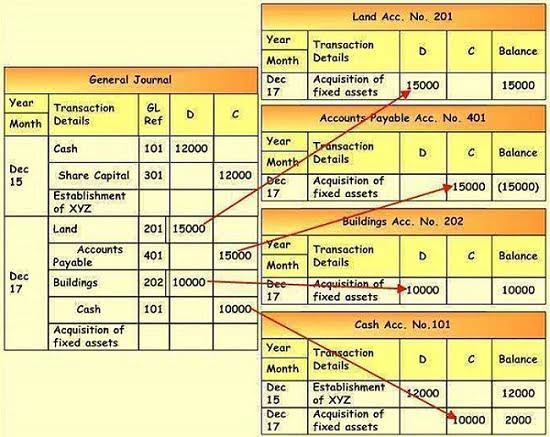
To clear the full contract amount from Progress Billings, they’ll perform a debit, then credit revenue. To recognize the costs of the contract, they’ll credit Construction in Progress and debit their expenses. completed contract method formula Most trade contractors can choose to get by with the cash basis of accounting. It’s relatively easy to implement and gets the ball rolling with tracking cash flow.
Scroll less, learn more about construction.

Even if you receive payment 30 days later in August, you’ll still record the revenue from this job in July to reflect when you physically built the fence and earned payment. If you incurred costs in July, you’ll recognize them in July (whether you actually received the materials or not). In short, when you rely on cash basis accounting, you won’t have an accurate way to record profits. This will bring huge fluctuations in results that can make it difficult to accurately job cost. Because you’ll be recording income and expenses in separate accounting periods, making it extremely challenging to understand your true financial position. Finally, the cash basis of accounting isn’t allowed under GAAP or IFRS (more on this in the next section).
Related AccountingTools Courses

When actual contract costs are not easy to estimate, contractors, favor the completed contract accounting method. Other favorable instances include when you have a number of projects ongoing simultaneously and when your project period is short. When there is unpredictability in determining when a client is going to pay, contractors use the completed contract method of accounting. Since it’s easy to ascertain that a project has been finished, all costs are calculated at the end of the contract. However, because of this delay in completed contract method revenue recognition, the business will be allowed to defer recognition of the related income taxes.

Tax Liability
Let’s say you wanted to analyze how profitable you were in July of last year (during your busiest time of the year). There will be a timing difference between revenue and expense recognition using https://www.bookstime.com/the-accounting-equation cash basis. You may not get paid for all completed work in July until August or even September. In this case, September will look like your most profitable month when in reality, you earned this money in July. The advantages of the completed contract method are that it allows businesses to defer revenue and tax obligations until payment is assured.
- For information pertaining to the registration status of 11 Financial, please contact the state securities regulators for those states in which 11 Financial maintains a registration filing.
- It won’t give you the tools you need to manage your business in a way that facilitates long-term growth.
- This method requires contractors to use a separate, dedicated balance sheet to record their expenses and revenues.
- So if you’re a large company or growing business with your sights set on growing even more, we suggest you steer clear of cash basis accounting.
- It treats each construction project independently, complete with a budget, as well as detailed revenue and expense tracking.
When an incomplete contract reveals a loss, the whole amount of the loss must be charged to the profit and loss account of the accounting year. Notably, only a proportion of the estimated profit is transferred to the profit and loss account, leaving the balance to guard against future contingencies. These are contracts that are nearing completion and for which the future costs to be incurred on their completion can reasonably be estimated. Given the future uncertainties involved in contract work, only a portion of the notional profit is transferred to the profit and loss account.
For these companies, the Completed Contract Method of accounting allows revenue and expenses to be recognized — on certain long-term projects — only when the project is complete. The completed contract method has a similar setup to the percentage of completion method. However, it’s best used for small jobs that are relatively short-term or when a project brings an inherent risk to job completion beyond what is typical. For example, situations where political instability or natural disasters may interfere with project completion. For this reason, the https://www.instagram.com/bookstime_inc completed contract method can be a tool for hedging against unpredictable circumstances.

Pros and cons of accrual basis accounting
- Instead, GAAP requires accrual accounting, as it does a better job of accounting for a company’s genuine financial standing.
- Finally, when assessing and choosing revenue recognition methods, contractors should consult with their construction-specific CPA.
- This can be disconcerting for investors and lenders, who cannot tell if the organization is performing well.
- This transfer of control may happen at a single point in time or over an extended duration.
- Under the completed contract approach, companies must report the cost and revenue incurred based on the actual results.
- Therefore, it helps the company avoid the errors that can be caused when estimation is made on various aspects, like in the case of the percentage completion method.
Companies that use the CCM must have some sort of accounts to hold these transactions until recognition. Consult with your project-specific CPA when selecting or choosing the pertinent revenue recognition method. The best accounting procedure is the one that suits both the purposes of reporting and tax while offering an accurate picture of your business’s financial health.

Construction Progress Billing: Keeping the Cash Flowing
The first option of reporting on completion of the contract means that your business’s revenues will only be recognized once the contract is fully complete. For example, if a contract is set for completion in five years, the business may not incur taxes on that project’s income during that time. If tax rates were to increase during that period of five years, the company faces paying higher taxes than it would have if reporting occurred sooner in the process. The completed-contract method is one where the business entity decides to postpone its revenue and profit recognition until the project is completed or finished. Usually, business organizations adopt such methods when they are doubtful about recovering their debts.
